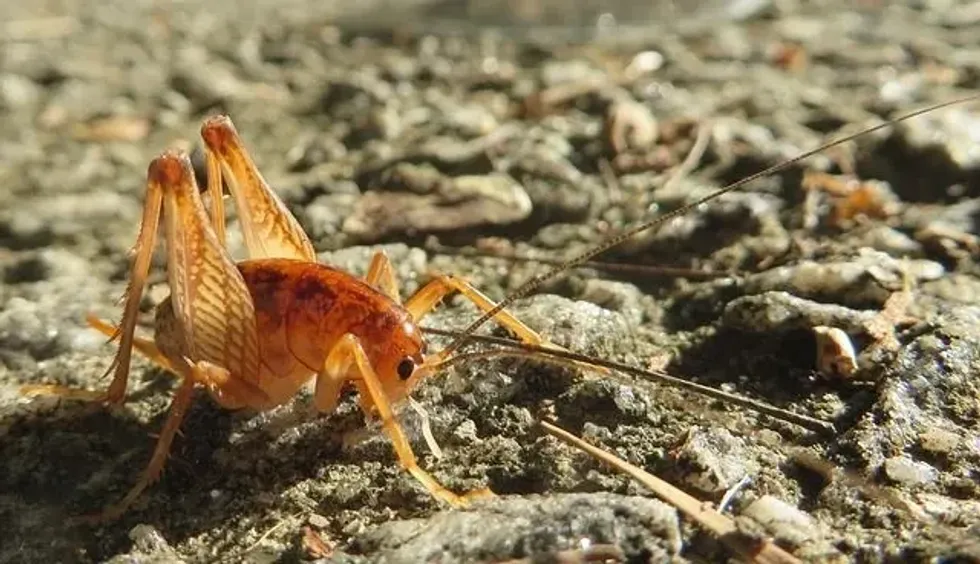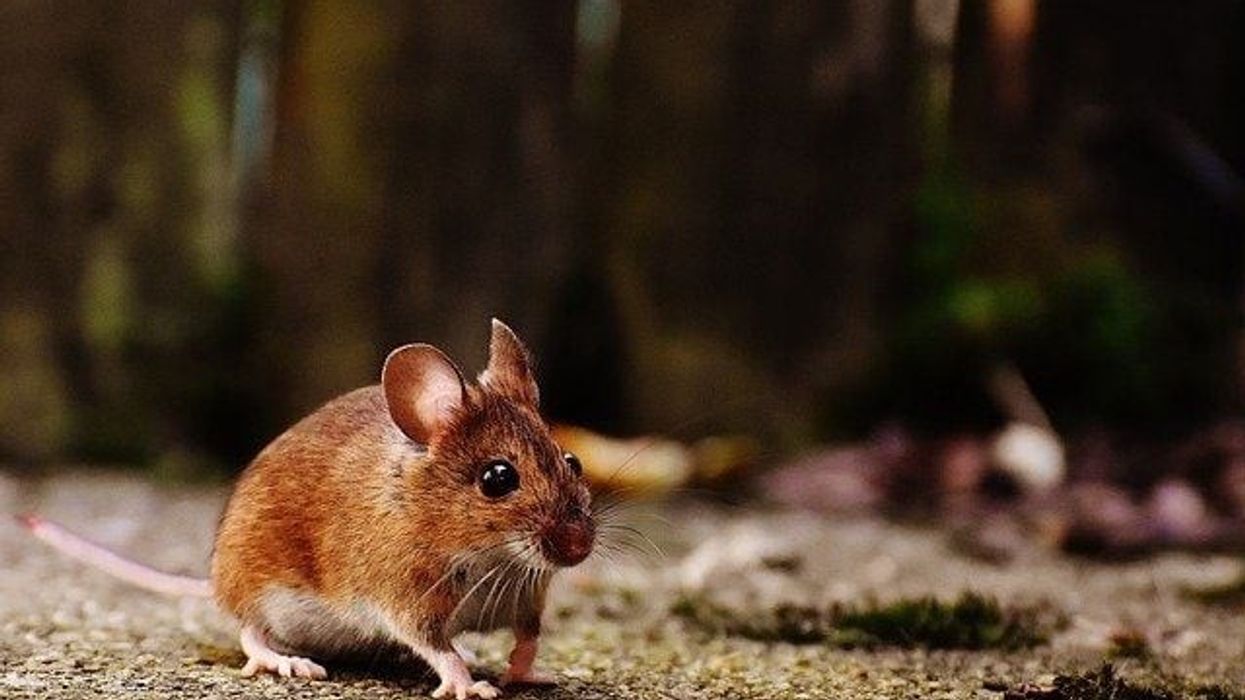One of the common nocturnal insects found on rotting logs, damps, stones, and caves, the Camel Crickets are known by different names such as spider crickets, cave crickets, camelback crickets, and many more. The scientific name of the insect is Rhaphidophoridae.
There are more than 1100 species of insect that are found in multiple countries such as Australia, and New Zealand.
The camel crickets are generally brown. They have no wings but are best known for their large hind legs which resemble drumsticks.
Camel crickets also have antennae that are placed next to each other. The crickets are quite long in size and without legs, their length can go up to 1.9 in (5cm).
The camel cricket primarily eats everything, be it plants, feces, dead animals, or small insects. A different species of insect has also been found in different countries of Asia and Europe. The cave crickets found in Australia are best known for their jumps.
They are not poisonous but can cause damage to the human body through infections and diseases. Keep on reading to learn more interesting things about Camel Cricket.
If you want to know more exciting facts about other animals, check out the Yellow Jacket Wasp and Mud Dauber Wasp.
Camel Cricket Interesting Facts
What type of animal is a Camel Cricket?
Camel crickets are a species of cricket that is quite popular as spider crickets. People generally refer to the insect as a bug.
What class of animal does a Camel Cricket belong to?
The Camel Cricket belongs to the family of Rhaphidophoridae and the class of Insecta.
How many Camel Crickets are there in the world?
As per science, we do not know the exact population of the Camel crickets but the insect is quite common and can easily be found in different nations such as New Zealand, and Australia. Also, a different species of the insect has been found in Asia.
As of now, there are around 1100 species of insect and spider crickets and cave crickets are a few popular names that are used in different countries instead of camel crickets.
Where does Camel Cricket live?
The camel crickets are spread throughout the world and can easily be found in countries such as Australia, New Zealand, North America, and different parts of Europe and Asia.
What is a Camel Cricket's habitat?
You can find these nocturnal insects everywhere. These insects are found in caves, damp, rotting logs, forests, grasslands, swamps, and gardens. Camel crickets can also be spotted on plants and dead animals.
Who do Camel Crickets live with?
Unlike other insects, most camel crickets are solitary insects and like to live alone throughout their life. They are different from other insects such as ants and bees who work in groups. Only during the mating season do camel crickets meet.
How long does a Camel Cricket live?
A camel cricket generally survives quite long when compared to other species of cricket. The average lifespan of a camel cricket is around one to two years. But most of the species of cricket only live for around three to four months.
How do they reproduce?
Unlike mammals, all insects including camel crickets have a different process of mating as they lay eggs. Female camel crickets require a partner to fertilize the eggs.
They mostly breed in the spring season and lay eggs in April month and during this time, the male camel crickets usually attract the females by making a chirping sound with their wings. Once the process of mating is done, the camel cricket eggs are deposited in the moist sandy soil by the females.
They leave the eggs to get hatched.
What is their conservation status?
The camel crickets are spread throughout the world and the crickets belong to one of the common species. The Internation Union for the Conservation of Nature has listed the insect in the Least Concern category.
As of now, there are more than 1100 species of camel crickets that can be spotted almost everywhere. Australia, New Zealand, Tasmania, North America, different parts of Europe, and Asia are a few common regions where these bugs are found.
Camel Cricket Fun Facts
What do Camel Crickets look like?
The Camel Crickets are brown and during sunlight, they look yellow. Their big antennas and hind legs like a spider make the insect more fascinating.
Their body is very hard and seems like a shell. These crickets also have a humped back just like camels and a few of the crickets also have spots on their body which make them more attractive.
How cute are they?
The answer varies from person to person, some people may like them as they have big antennae and hind legs. The cave crickets and spotted camel cricket, and spider cricket also look very gross.
Many people do not prefer these crickets as a pet, they usually chirp in the spring season which also gets annoying sometimes, and the crickets are dark in color so they consider them infectious. Humans generally call pest control to get rid of them.
How do they communicate?
Usually, every species of cricket, be it Asian camel cricket, cave crickets, or spider crickets, chirp when they want to communicate with other crickets. Also, a few crickets don't chirp as they use other modes of communication like touching and smelling. In the spring season, the male crickets make different sounds to allure the females.
How big is a Camel Cricket?
The average camel cricket size is 3.9 in (10 cm). The size of these crickets is four times larger than the field cricket, also known as the wood cricket.
How fast can Camel Crickets move?
According to a study, they can jump up to 3 ft (91 cm) which is almost 50 times their height. With their fast reflexes and movements, the cave crickets could easily scare humans too.
How much does a Camel Cricket weigh?
An average camel cricket may not weigh too much but its upper layer of skin is quite hard and is made of a shell-like structure. They weigh around 0.00055 lb (0.25 g)
What are the male and female names of the species?
There are no specific names given to the male and female species of this insect.
What would you call a baby Camel Cricket?
There is no particular name given to the babies of camel cricket.
What do they eat?
Like most crickets, camel crickets are also omnivores and can be easily found mostly in a damp environment. They primarily eat dead animals, feces, plants, and wood. Many of them are found in caves and cave crickets generally eat small insects and fungi.
Are they harmful?
People are scared of the camel cricket bite but they do not have fangs and do not possess any threats to humans. Also, there is no such thing as camel cricket poison.
But a few species such as the greenhouse camel cricket or other adults tend to be more infectious. Humans also need to remember that a camel cricket infestation could also cause several diseases as these insects generally consume dead animals.
Would they make a good pet?
These crickets can be your pet but they cannot create a bond with you. Many people do not consider crickets pets and always want to get rid of them as they cause damage and they belong in the wild.
Did you know...
In countries such as Japan, these crickets are known as 'Kamado Uma' or 'Toilet Cricket' as they commonly attack and damage homes in the cold region.
Their legs are larger than their body. Camel crickets often jump to protect themselves and when someone scares them they use it as a tool of self-defense.
People generally use glue traps and many insecticides to kill camel crickets.
Camel crickets are nocturnal and are attracted to humidity and moisture.
The antennae of a camel cricket are longer than their bodies.
Offsprings are produced twice a year throughout the US, one in early spring and one in late summer.
We know that the species are primarily found in damp, caves, and rotting logs but some camel crickets may be found in colder places such as the highest mountain of New Zealand, Mount Cook. These are their alpine habitats.
Why are they called Camel Crickets?
They are called camel crickets because of their appearance. They are brown and also have a humped back, similar to a camel.
How high can Camel Crickets jump?
In countries such as Australia, we can find different and energetic species of crickets. The crickets are best known for fast movements, reflexes, and high jumps and you can also find a camel cricket jumping quite easily. Adult camel crickets may jump up to 3 ft (91 cm).
Here at Kidadl, we have carefully created lots of interesting family-friendly animal facts for everyone to discover! Learn more about some other arthropods including the giant African millipede or atlas beetle.
You can even occupy yourself at home by drawing one on our camel cricket coloring pages.










